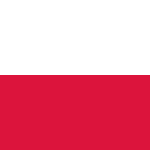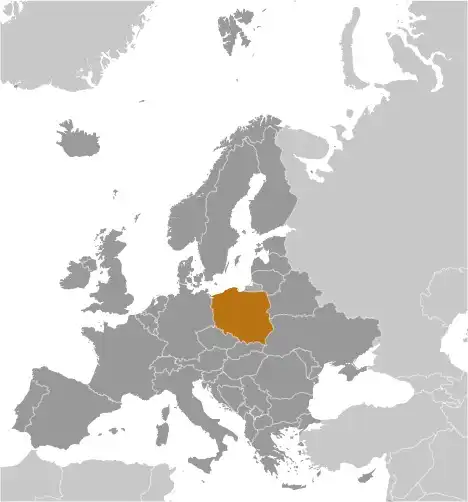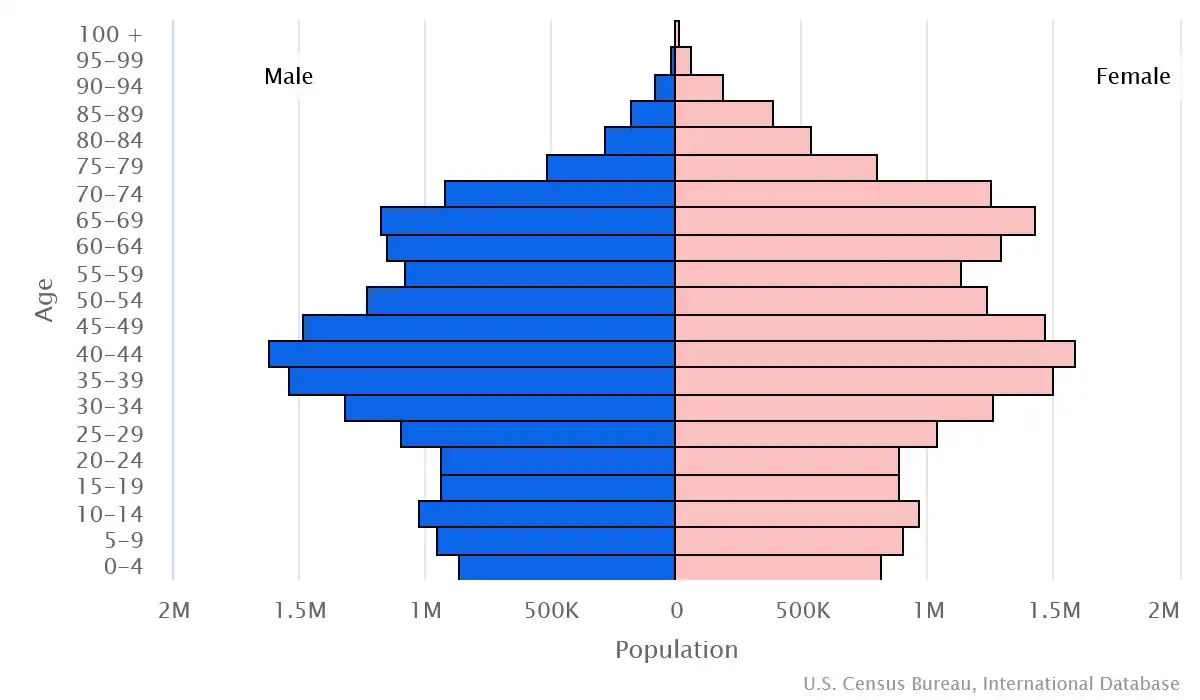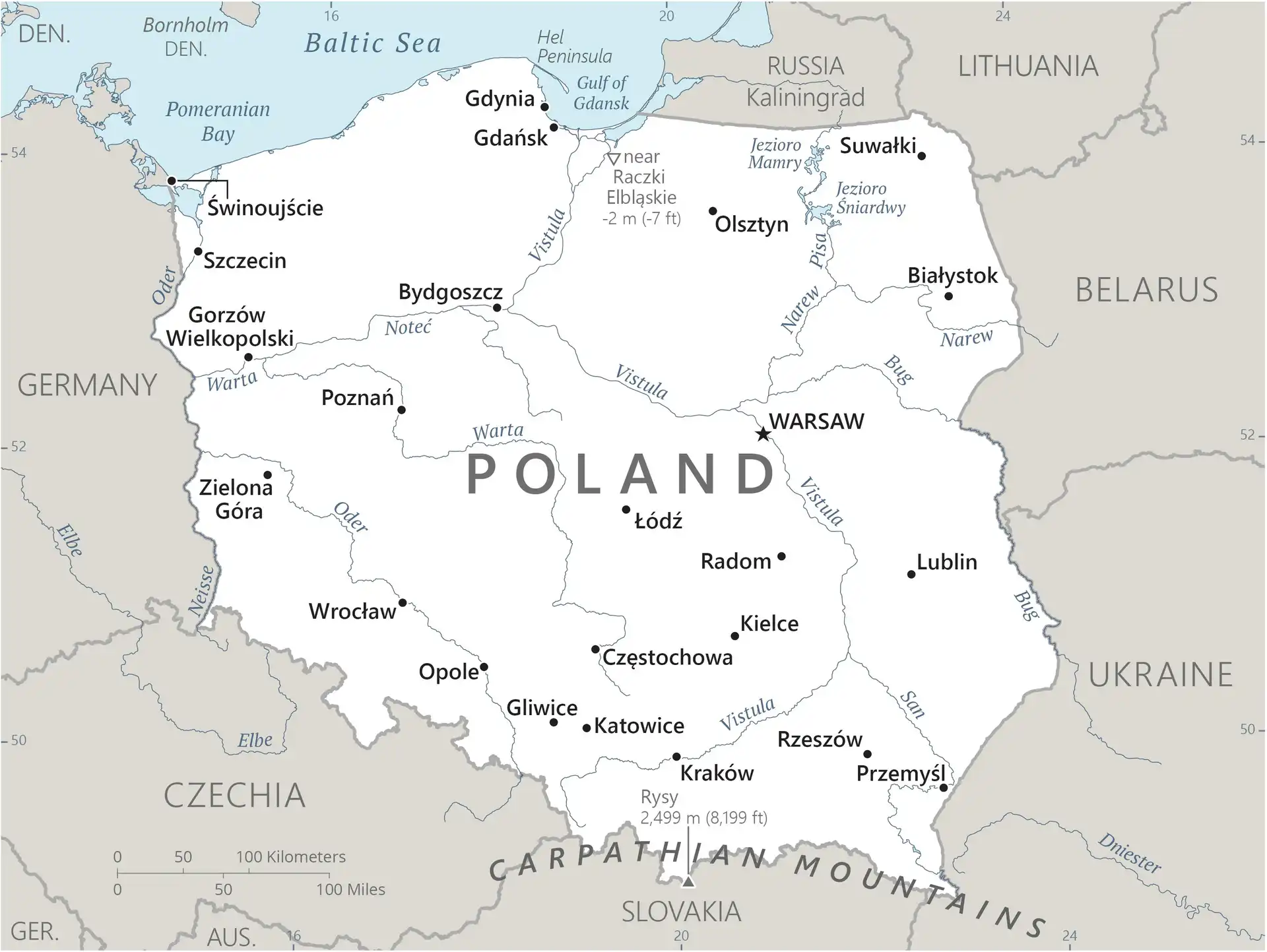
Poland
Veröffentlicht: 20. June 2022 - Letztes Update: 28. February 2025
Country Data Dashboard

Population
38,746,310
Growth: -1% (2024 est.)
GDP
$809.201 billion
(2023 est.)
Area
312,685 sq km
| Government type: | parliamentary republic |
| Capital: | Warsaw |
| Languages: | Polish (official) 98.2%, Silesian 1.4%, other 1.1%, unspecified 1.2% (2011 est.) |
People & Society
Ethnicity (2011 est.)
Religion (2022 est.)
Age structure

Economy
Economic overview
high-income, diversified, EU-member economy; significant growth in GDP, trade, and investment since joining EU in 2004; rebounding from slowdown triggered by inflation and fall in consumer demand; strong foreign investment supported by EU structural funds; income tax reform and defense spending have added to public debt
Real GDP (purchasing power parity) in Billion $
Real GDP per capita in $
Exports & Imports in billion $
Top 5 Import Partner in 2022 (48%)
Top 5 Import Commodities in 2022
- garments 👕
- crude petroleum 🛢️
- cars 🚗
- vehicle parts/accessories 🛠️🚗
- plastic products ♻️
Top 5 Export Partner in 2022 (48%)
Top 5 Export Commodities in 2022
- vehicle parts/accessories 🛠️🚗
- plastic products ♻️
- garments 👕
- electric batteries 🔋
- computers 💻
Geography
Map

Area
Natural resources
- coal ⚫
- sulfur 🧪
- copper 🟧🪙
- natural gas 💨
- silver 🪙
- lead 🪙
- salt 🧂
- amber 🟧
- arable land 🌱
Climate
temperate with cold, cloudy, moderately severe winters with frequent precipitation; mild summers with frequent showers and thundershowers
Historical Background Information
Poland's history as a state began near the middle of the 10th century. By the mid-16th century, the Polish-Lithuanian Commonwealth ruled a vast tract of land in Central and Eastern Europe. During the 18th century, internal disorder weakened the nation, and in a series of agreements between 1772 and 1795, Russia, Prussia, and Austria partitioned Poland among themselves. Poland regained its independence in 1918 only to be overrun by Germany and the Soviet Union in World War II. It became a Soviet satellite state following the war. Labor turmoil in 1980 led to the formation of the independent trade union Solidarity that over time became a political force with over 10 million members. Free elections in 1989 and 1990 won Solidarity control of the parliament and the presidency, bringing the communist era to a close. A "shock therapy" program during the early 1990s enabled the country to transform its economy into one of the most robust in Central Europe. Poland joined NATO in 1999 and the EU in 2004.
